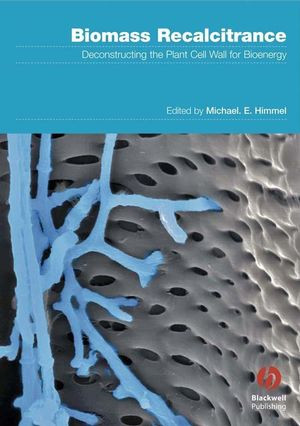

Most ebook files are in PDF format, so you can easily read them using various software such as Foxit Reader or directly on the Google Chrome browser.
Some ebook files are released by publishers in other formats such as .awz, .mobi, .epub, .fb2, etc. You may need to install specific software to read these formats on mobile/PC, such as Calibre.
Please read the tutorial at this link: https://ebookbell.com/faq
We offer FREE conversion to the popular formats you request; however, this may take some time. Therefore, right after payment, please email us, and we will try to provide the service as quickly as possible.
For some exceptional file formats or broken links (if any), please refrain from opening any disputes. Instead, email us first, and we will try to assist within a maximum of 6 hours.
EbookBell Team

4.1
80 reviewsThis book examines the connection between biomass structure, ultrastructure, and composition, to resistance to enzymatic deconstruction, with the aim of discovering new cost-effective technologies for biorefineries. It contains chapters on topics extending from the highest levels of biorefinery design and biomass life-cycle analysis, to detailed aspects of plant cell wall structure, chemical treatments, enzymatic hydrolysis, and product fermentation options.
Biomass Recalcitrance is essential reading for researchers, process chemists and engineers working in biomass conversion, also plant scientists working in cell wall biology and plant biotechnology.Content:
Chapter 1 Our Challenge is to Acquire Deeper Understanding of Biomass Recalcitrance and Conversion (pages 1–6): Dr Michael E. Himmel and Stephen K. Picataggio
Chapter 2 The Biorefinery (pages 7–37): Thomas D. Foust, Kelly N. Ibsen, David C. Dayton, J. Richard Hess and Kevin E. Kenney
Chapter 3 Anatomy and Ultrastructure of Maize Cell Walls: An Example of Energy Plants (pages 38–60): Shi?You Ding and Dr Michael E. Himmel
Chapter 4 Chemistry and Molecular Organization of Plant Cell Walls (pages 61–93): Philip J. Harris and Bruce A. Stone
Chapter 5 Cell Wall Polysaccharide Synthesis (pages 94–187): Debra Mohnen, Maor Bar?Peled and Chris Somerville
Chapter 6 Structures of Plant Cell Wall Celluloses (pages 188–212): Rajai H. Atalla, John W. Brady, James F. Matthews, Shi?You Ding and Dr Michael E. Himmel
Chapter 7 Lignins: A Twenty?First Century Challenge (pages 213–305): Laurence B. Davin, Ann M. Patten, Michael Jourdes and Norman G. Lewis
Chapter 8 Computational Approaches to Study Cellulose Hydrolysis (pages 306–330): Michael F. Crowley and Ross C. Walker
Chapter 9 Mechanisms of Xylose and Xylo?Oligomer Degradation During Acid Pretreatment (pages 331–351): Xianghong Qian and Mark R. Nimlos
Chapter 10 Enzymatic Depolymerization of Plant Cell Wall Hemicelluloses (pages 352–373): Stephen R. Decker, Matti Siika?Aho and Liisa Viikari
Chapter 11 Aerobic Microbial Cellulase Systems (pages 374–392): David B. Wilson
Chapter 12 Cellulase Systems of Anaerobic Microorganisms from the Rumen and Large Intestine (pages 393–406): Harry J. Flint
Chapter 13 The Cellulosome: A Natural Bacterial Strategy to Combat Biomass Recalcitrance (pages 407–435): Edward A. Bayer, Bernard Henrissat and Raphael Lamed
Chapter 14 Pretreatments for Enhanced Digestibility of Feedstocks (pages 436–453): David K. Johnson and Richard T. Elander
Chapter 15 Understanding the Biomass Decay Community (pages 454–479): William S. Adney, Daniel van der Lelie, Alison M. Berry and Dr Michael E. Himmel
Chapter 16 New Generation Biomass Conversion: Consolidated Bioprocessing (pages 480–494): Y.?H. Percival Zhang and Lee R. Lynd